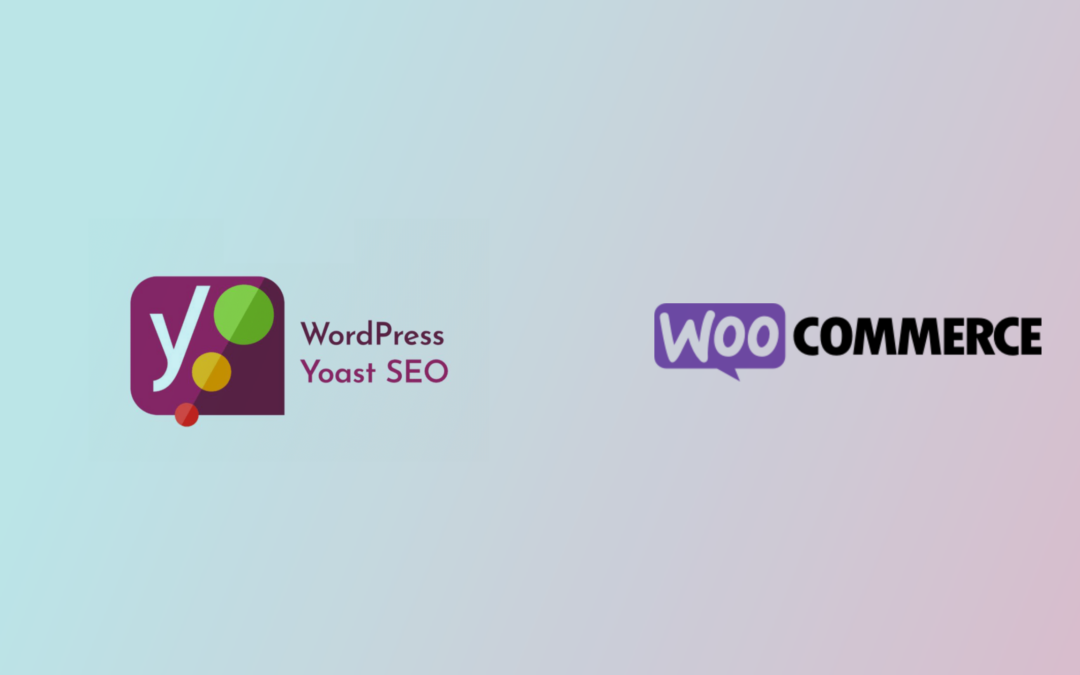Understanding your target audience is crucial for designing effective strategies. One powerful technique to achieve this is audience mapping. In this article, we will explore what audience mapping is and why it is important in the marketing field. We will also see how this technique can help you better understand your customers and direct your marketing strategies more effectively.
Definition of Audience Mapping
Audience mapping refers to the process of identifying, analyzing, and thoroughly understanding your target audience. Here are two key aspects regarding the definition of audience mapping:
Explanation of what the audience mapping process entails
The audience mapping process involves collecting and analyzing relevant data about your potential customers. This includes demographic information, purchasing behaviors, preferences, interests, and specific needs. The goal is to create detailed profiles of the different segments of your audience and understand what motivates them and how you can meet their needs.
Audience mapping also involves the use of research techniques, such as surveys, interviews, and data analysis, to gather valuable information about your customers. This process allows you to get a clear and accurate picture of who your customers are, what they are looking for, and how you can effectively communicate with them.
Identification of the necessary data and research for effective mapping
To perform effective audience mapping, it is necessary to gather different types of data and information. These may include:
- Demographic data: such as age, gender, geographic location, educational level, and marital status.
- Purchasing behavior: what products or services they buy, how often, where they do it, and what factors influence their purchasing decisions.
- Preferences and interests: what they like, their hobbies, their preferred activities, and the trends they follow.
- Needs and challenges: what problems they face and how your product or service can help solve those challenges.
Additionally, it is important to conduct further research to gain a deeper understanding of your customers. This may involve individual interviews, focus groups, or analysis of data from secondary sources. The combination of quantitative and qualitative data will provide you with a comprehensive and accurate view of your target audience.
Demographic Segmentation
Demographic segmentation involves dividing an audience into demographic groups based on characteristics such as age, gender, and geographic location. Some key aspects of demographic segmentation are:
- Age division: Consumers are grouped into different age categories, such as children, teenagers, young adults, middle-aged adults, and seniors. Each group may have different needs, preferences, and consumption behaviors.
- Gender division: Gender segmentation divides the audience into male and female groups. This categorization may be relevant for specific products or services that have differentiated appeal based on gender.
- Geographic location division: Geographic location is also an important factor in demographic segmentation. Consumers can be grouped based on their country, region, city, or even postal codes.
Examples of demographic segmentation in different industries include:
- A baby and children’s clothing brand that focuses on demographic segments such as “first-time mothers” and “young parents.”
- An auto insurance company that segments its audience based on age and gender, offering customized policies for “young drivers” or “senior drivers.”
Psychographic Segmentation
Psychographic segmentation groups individuals based on their values, interests, and behaviors. Some important aspects of psychographic segmentation are:
- Values and beliefs: Consumers are grouped based on their core values and beliefs, such as sustainability, gender equality, or social responsibility.
- Interests and hobbies: Shared interests and hobbies, such as sports, music, or travel, can be relevant criteria for psychographic segmentation.
- Lifestyles: Lifestyles reflect how people live and relate to the world. This includes aspects such as socioeconomic level, housing type, daily activities, and leisure preferences.
Examples of psychographic segmentation in the context of audience mapping include:
- An organic products company targeting consumers who value healthy and sustainable food.
- A travel agency segmenting its audience based on adventure and exploration interests, offering customized packages for adventurous travelers.
Behavioral Segmentation
Behavioral segmentation involves identifying and classifying audience segments based on their purchasing behavior, online interactions, and consumption preferences. Some relevant aspects of behavioral segmentation are:
- Purchasing behavior: Consumers are grouped based on their purchasing patterns, such as frequent buyers, occasional buyers, or high-value buyers.
- Online interactions: Online activity, such as website browsing, social media interactions, or newsletter subscriptions, can be an important segmentation criterion.
- Consumption preferences: Consumption preferences, such as preference for eco-friendly products, specific brands, or minimalist lifestyles, can guide behavioral segmentation.
Examples of behavioral segmentation in audience mapping strategies include:
- An online store offering personalized recommendations based on previous purchases and user browsing history.
- A streaming platform segmenting its audience based on favorite music genres and content preferences, offering personalized playlists and recommendations.
Audience mapping is essential for marketing success. Demographic segmentation, psychographic segmentation, and behavioral segmentation are key approaches to better understand consumers and tailor marketing strategies to their needs and preferences. By using these approaches effectively, brands can create more relevant messages and campaigns, maximizing the impact of their marketing efforts.
Segmentation by Communication Channels
Segmentation by communication channels is a key approach in audience mapping that involves determining which communication channels a specific audience uses and how they can be effectively used to reach them. Some important aspects of segmentation by communication channels are:
- Audience research and analysis: To understand which communication channels an audience uses, it is essential to conduct thorough research and analyze available data. This may include surveys, social media analysis, market studies, and other relevant sources of information.
- Selection of appropriate channels: Once you understand how an audience communicates, it is important to select the appropriate communication channels to effectively reach them. This may include channels such as social media, email, online ads, sponsored content, events, among others.
- Message and format personalization: Each communication channel has its own characteristics and requirements. It is important to tailor the message and format to fit each channel and be relevant to the audience. This involves personalizing content, tone, and communication style according to audience preferences and channel-specificities.
Examples of segmentation by communication channels in different marketing contexts include:
- A fashion company using Instagram and TikTok to reach a young, trend-oriented audience, leveraging the visual features and real-time interaction of these channels.
- A professional services firm using LinkedIn and email to reach a business audience, leveraging professional connections and the ability to target specific profiles.
Examples of Audience Mapping
Audience mapping has been successfully applied in numerous marketing campaigns. Here are some real-life cases of how audience mapping has been used in successful campaigns, along with lessons learned and best practices:
Case Study 1: Launch campaign for a technological product:
In this campaign, audience mapping was applied to identify the most receptive audience segments for the new product. Communication channels such as social media, influencers, and content marketing were used to effectively reach each segment. The lesson learned was the importance of adapting the message and approach according to the characteristics and preferences of each segment.
Case Study 2: Awareness campaign for a non-profit organization:
In this campaign, segmentation based on behavior and audience preferences was performed to identify the most effective communication channels. Social media, email, and local events were used to reach different audience segments. The lesson learned was the importance of using multiple channels and tailoring the message to each segment to generate greater impact and engagement.
Case Study 3: Launch campaign for a food product:
In this campaign, demographic and psychographic segmentation was applied to identify the most relevant audience segments. Communication channels such as TV advertising, influencer marketing, and tasting events were used to effectively reach each segment. The lesson learned was the importance of understanding the specific needs and preferences of each segment to tailor the message and create a stronger connection with the audience.
Importance of Audience Mapping
Understanding and segmenting your audience is crucial for any digital marketing strategy. An audience map allows you to identify and categorize your audience, optimizing communication and content strategies.
Tools for Audience Analysis
To perform an in-depth and efficient analysis, the Boardfy Competitor Reports tool can provide detailed information about your audience and competitors’ behavior, facilitating strategic decision-making. This tool is fundamental for creating an accurate and comprehensive audience map.
Lessons Learned and Best Practices
- Adapt the message: Each audience segment has unique characteristics and preferences. Adapting the marketing message for each segment improves receptivity and engagement. A good audience map is essential for this adaptation.
- Utilize multiple channels: Leveraging different communication channels such as social media, content marketing, and influencers helps to reach the audience more effectively. Using an audience analysis example can guide this strategy.
- Continuous analysis: Constant analysis of audience and competitor behavior is crucial to adjusting and improving marketing strategies in real-time.
Applying these lessons and best practices can mean the difference between a successful marketing campaign and one that fails to achieve its objectives. A well-crafted and updated audience map is key to maintaining the relevance and effectiveness of your marketing campaigns.
Conclusions
In this article, we have explored the concept of audience mapping and its importance in the marketing field. Let’s briefly recap the key points and highlight how audience mapping can help you personalize your marketing strategies and improve your results.
- Audience mapping is a process that allows you to gain a deep understanding of your target audience by creating detailed profiles of the different segments that compose it.
- This technique provides valuable information about the demographic, behavioral, psychographic, and consumption characteristics of your potential customers.
- By knowing your audience better, you can tailor your messages, products, and offers to better meet their needs and desires.
- Market research plays a fundamental role in audience mapping as it provides key data and insights about your customers. You can gather information through surveys, data analysis, and market studies to get a comprehensive picture of your target audience.
- Audience mapping is essential in digital marketing as it allows you to target your efforts more precisely and personalize your approach. You can segment your audience and deliver specific messages and offers to each segment, increasing the likelihood of capturing the attention of your potential customers and improving your results.
- By using audience mapping in message and offer personalization, you can provide relevant and customized content to your customers, strengthening the relationship with them and increasing the likelihood of conversion and loyalty.
In summary, audience mapping is a powerful strategy that allows you to better understand your target audience and adapt your marketing actions more effectively. By using this technique, you will be able to improve the personalization, relevance, and results of your marketing strategies.
Frequently Asked Questions about Audience Mapping
What is the difference between audience mapping and market segmentation?
Audience mapping involves gaining a deep understanding of the target audience and creating detailed profiles of the different segments within it. Market segmentation, on the other hand, is based on dividing the market into broader groups with similar characteristics and needs.
What data is used for effective audience mapping?
To perform effective audience mapping, data such as demographic, behavioral, psychographic, and consumption data is used. This data is obtained through market research, surveys, data analysis, and other research techniques.
What is the importance of market research in audience mapping?
Market research is essential in audience mapping as it provides key information about potential customers. It helps understand their characteristics, needs, desires, and behaviors, allowing for the creation of detailed audience profiles and effective adaptation of marketing strategies.
How can I apply audience mapping in my digital marketing strategy?
To apply audience mapping in your digital marketing strategy, start by researching and gathering data about your target audience. Then, use that data to create detailed audience profiles and segment your strategy, tailoring messages and offers to each segment.
What are some useful tools and techniques for conducting audience mapping?
Some useful tools and techniques for audience mapping include surveys, data analysis, market studies, keyword research, social media analysis, and customer interviews. These tools will help you gather valuable information about your audience and better understand them.
Is it possible to combine different types of segmentation in audience mapping?
Yes, it is possible to combine different types of segmentation in audience mapping. You can use demographic, behavioral, geographic, or psychographic segmentation as needed to create more detailed and accurate audience profiles.
What benefits can I gain from using audience mapping in message and offer personalization?
By using audience mapping in message and offer personalization, you can provide relevant and personalized content to your target audience. This increases the likelihood of capturing their attention, generating interest, and promoting conversion.
How can I measure the effectiveness of audience mapping in my marketing campaigns?
You can measure the effectiveness of audience mapping in your marketing campaigns through metrics such as conversion rates, return on investment (ROI), social media engagement, and customer feedback. These metrics will help you assess the impact of your strategies and make adjustments as necessary.
Is it necessary to regularly update audience mapping?
Yes, it is important to regularly update audience mapping. The characteristics and needs of your target audience may change over time, so it is crucial to keep audience profiles updated to ensure your marketing strategies remain relevant and effective.
What challenges might I face when conducting audience mapping and how can I overcome them?
When conducting audience mapping, you may face challenges such as obtaining reliable data, identifying specific segments, and correctly understanding the gathered information. To overcome these challenges, make sure to use reliable data sources, conduct thorough analysis, and seek assistance from market research professionals or marketing consultants.
The fastest monitoring and dynamic pricing platform worldwide
Boardfy allows you to monitor your competitors or distributors, make automatic price changes, optimize your Google Shopping campaigns, and much more.
7-days free trial. No credit card required.









